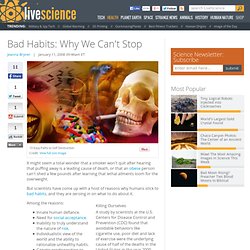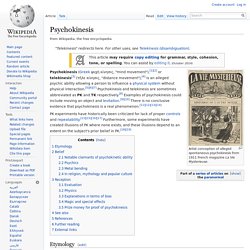

Life's Little Mysteries. When it comes to seeing in 3-D, two eyes are better than one.

To see how 3-D vision works, hold a finger at arm's length and look at it through one eye, then through the other. See how the image seems to jump? That's because of binocular disparity, the slight difference between the images seen by each eye. Binocular disparity is one of the most important pieces of information the visual centers of the brain use to reconstruct the depth of a scene. If the object you're trying to view is close to you, the brain uses another clue: convergence, or the angle of your eyes as you focus on an object.
Fighting Fungal Infections, Body Temperature & Fungus. For most folks, a thermometer reading around 98.6 degrees Fahrenheit (37 degrees Celsius) means their body temperature is normal.

Now, two scientists have an idea why our bodies, as well as those of most other mammals, consistently run at that temperature : A toasty body temperature helps keep nasty fungal infections at bay. "One of the mysteries about humans and other advanced mammals has been why they are so hot compared with other animals," said study co-author Arturo Casadevall, professor and chair of microbiology and immunology at Albert Einstein College of Medicine of Yeshiva. "This study helps to explain why mammalian temperatures are all around 98.6 degrees Fahrenheit.
" Bad Habits: Why We Can't Stop. It might seem a total wonder that a smoker won't quit after hearing that puffing away is a leading cause of death, or that an obese person can't shed a few pounds after learning that lethal ailments loom for the overweight.

But scientists have come up with a host of reasons why humans stick to bad habits, and they are zeroing in on what to do about it. Among the reasons: Innate human defiance. Portland Tribune and Community Newspapers - Ultimate mind reader (almost) By: TRIBUNE PHOTO: CHRISTOPHER ONSTOTT - Aimee Mooney, speech and language pathologist with OHSU's assistive technology program, applies gel (top) to conduct brain signals past the scalp to electrodes in a cap.
The cap has 16 electrodes picking up P300 signals. Talk about pressure. Secret Worlds: The Universe Within - Interactive Java Tutorial. Secret Worlds: The Universe Within View the Milky Way at 10 million light years from the Earth.

Then move through space towards the Earth in successive orders of magnitude until you reach a tall oak tree just outside the buildings of the National High Magnetic Field Laboratory in Tallahassee, Florida. Dreams of Autarky. By Robin Hanson Sept 2001, First version Sept 1999 Genie nanotech, space colonies, Turing-test A.I., a local singularity, crypto credentials, and private law are all dreams of a future where some parts of the world economy and society have an unusually low level of dependence on the rest of the world.

But it is the worldwide division of labor that has made us humans rich, and I suspect we won't let it go for a long time to come. Introduction Many of us expect humanity to encounter enormous changes in the next century, changes that we would do well to consider seriously now. The Fastest Way To Have Lucid Dreams & OBEs Tonight - Tim... - a Σχολειο video.
Psychokinesis. Artist conception of alleged spontaneous psychokinesis from 1911 French magazine La Vie Mysterieuse.

PK experiments have historically been criticized for lack of proper controls and repeatability.[13][15][16][17] Furthermore, some experiments have created illusions of PK where none exists, and these illusions depend to an extent on the subject's prior belief in PK.[18][19] Etymology[edit] The word psychokinesis, a portmanteau of the Greek language words ψυχή ("psyche"), meaning mind, soul, spirit, or breath; and κίνησις ("kinesis"), meaning motion, movement,[1][2] was coined in 1914 by American author Henry Holt in his book On the Cosmic Relations.[20][21][22] The term was later adopted by American parapsychologist J. B. Rhine in 1934 in connection with experiments that were conducted to determine if a person could influence the outcome of falling dice.[8][23]